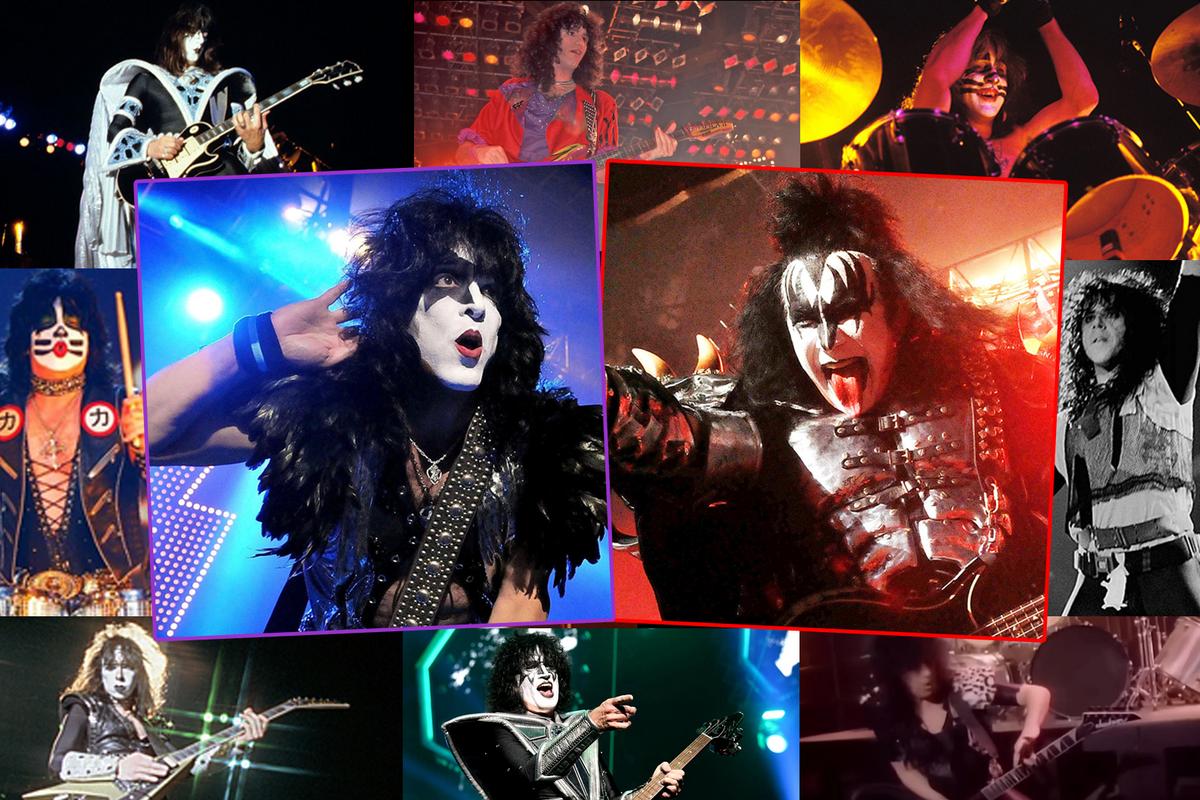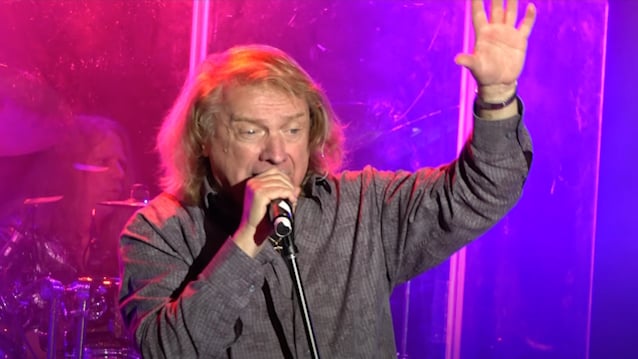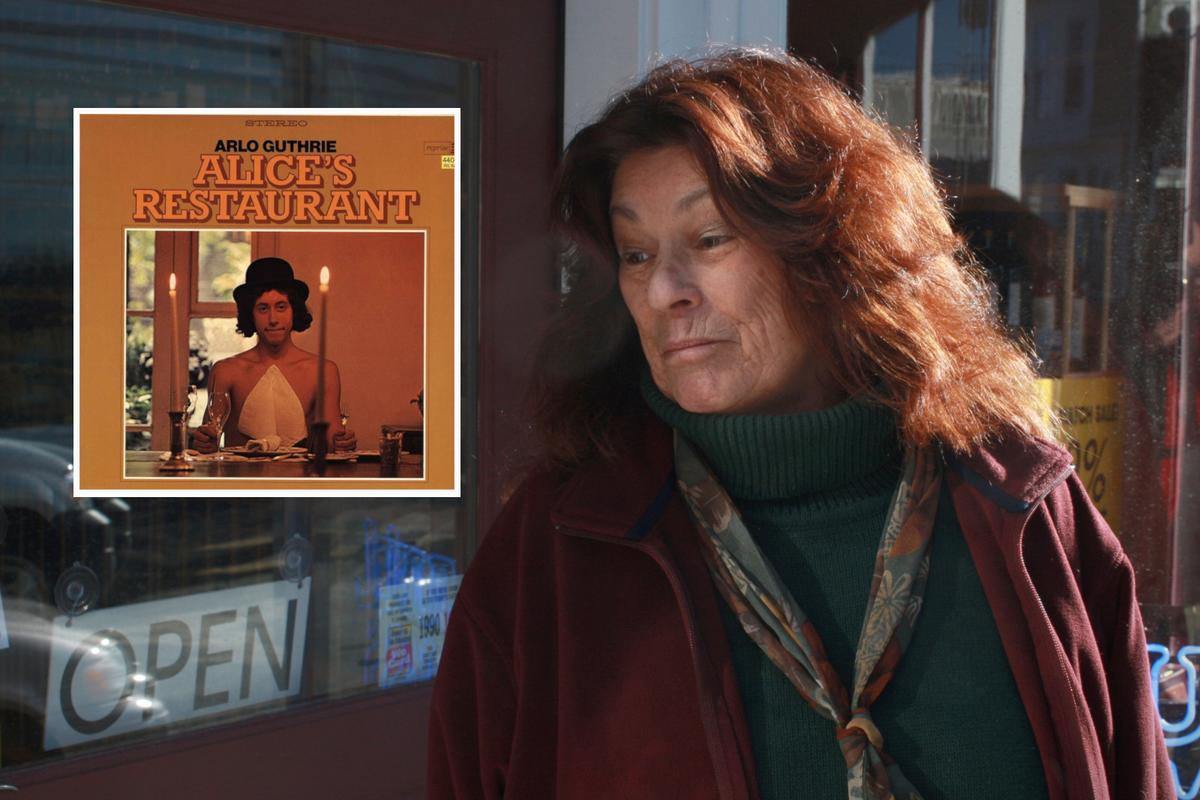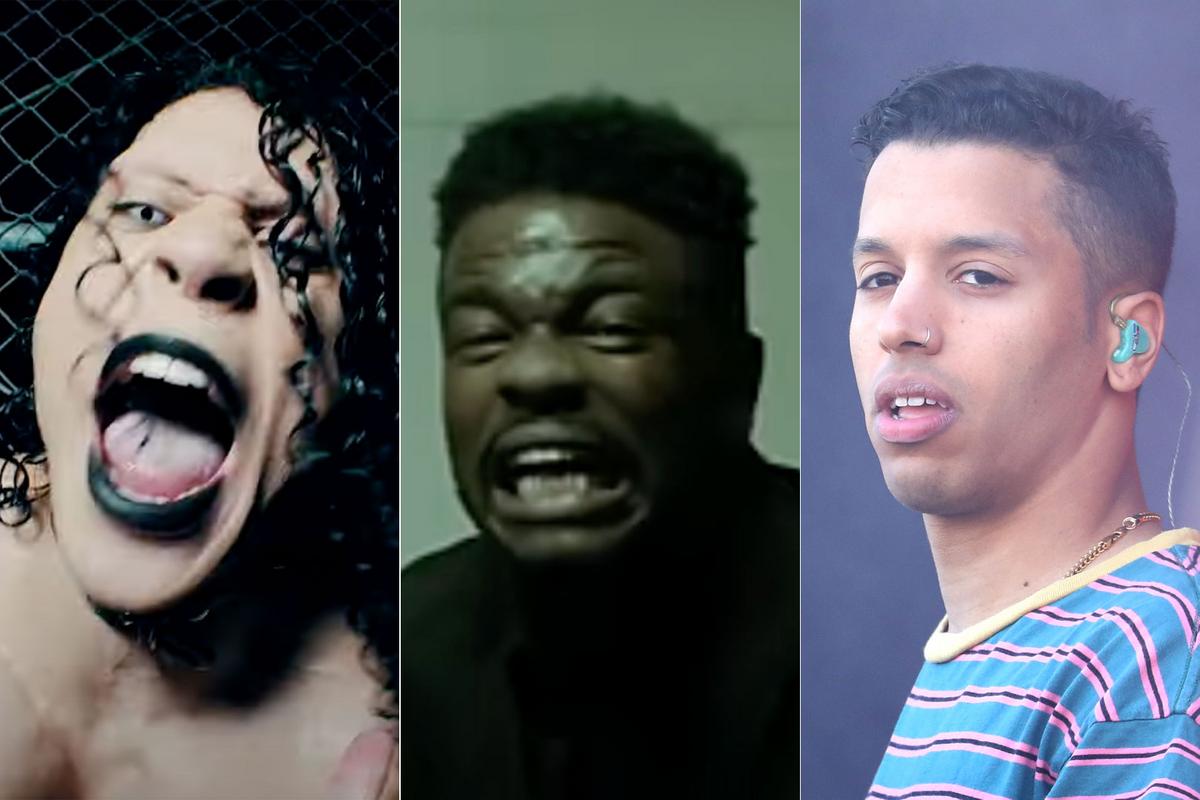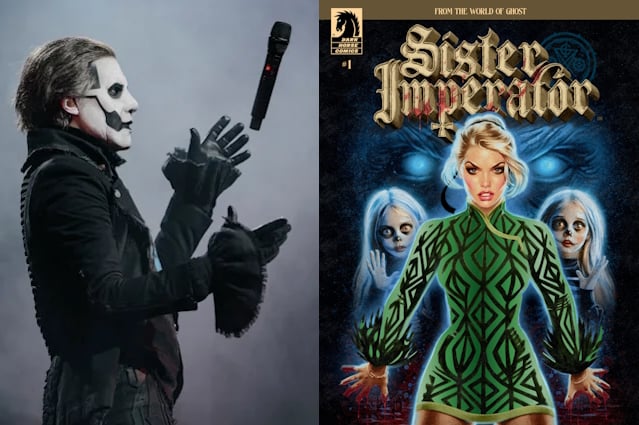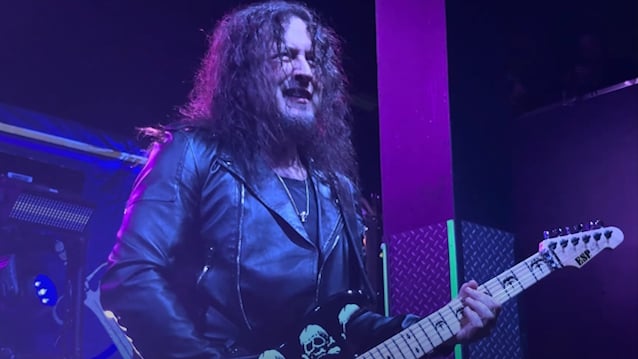Only 10 people have ever known what it’s like to be a member of Kiss, and only two have held that role throughout the band’s five decade-plus history.When ranking the influence of each member on the band’s career, it’s important to note that we’re not judging talent; you have to assume that anybody who reached this level had plenty of that to spare. Equally important are chemistry and timing, and as they say in How I Met Your Mother, “Timing is a bitch.”You will not be surprised to find Kiss mainstays Paul Stanley and Gene Simmons at the very top of this list, which takes into account length of service as well as contributions to the band’s 20 studio albums, with a particular emphasis on songwriting credits.YouTubeYouTubeloading…10. Mark St. John(1984: Animalize album)Kiss’ lead guitarist spot became a revolving door in the early ’80s, with founding member Ace Frehley departing in 1982 and his replacement Vinnie Vincent getting fired just two years later. It quickly became clear to Paul Stanley that their next recruit, Mark St. John wouldn’t last even that long. “The guy could never play the same thing twice, because he was just puking notes,” Stanley told Guitar World. “There was no structure to it.” Mitch Weissman and St. John’s soon-to-be replacement Bruce Kulick were brought in for additional unaccredited guitar work on 1984’s Animalize. When St. John developed a (possibly stress-related) arthritis condition, Kulick was brought in for the band’s next tour. St. John eventually joined the band for a few shows, but it was clear to both sides that this was not a match. “The situation was a East meets West type of thing,” St. John later told Kiss Asylum. “We didn’t hate each other, but they solved things ‘their way or hit the highway.'”Read More: Kiss Lineup Changes: A Complete GuideTommy ThayerKevin Winter, Getty Imagesloading…9. Tommy Thayer(2002-Present: Sonic Boom, Monster albums)Tommy Thayer had quite a unique introduction to life as Kiss’ lead guitarist. “The first major show he played with Kiss was in a huge stadium with a 70-piece orchestra,” Paul Stanley told the Oregonian in 2004. “If you can handle that, you can handle anything. It was his turn to get off the bench and start hitting home runs.” Thayer would up with the longest tenure of any Kiss lead guitarist, but only appeared on their last two studio albums. Stanley is resolute in his praise of Thayer’s contributions to Kiss, refusing to perform during the band’s 2014 Rock & Roll Hall of Fame induction because Thayer and drummer Eric Singer weren’t invited. “This is the band that has carried the flag and taken it, really, to another level,” he told Howard Stern. “This is the band I always dreamed it would be.”Eric SingerKevin Winter/Getty Imagesloading…8. Eric Singer(1991-1996, 2001-2002, 2004-Present: Revenge, Carnival of Souls, Sonic Boom, Monster albums)Eric Singer became Kiss’ third drummer under tragic circumstances, after the November 1991 cancer-related death of Eric Carr. Singer helped Stanley, Simmons and Kulick pay tribute to their fallen bandmate with one of the best albums of their career, 1992’s Revenge, then remained with the band for four more years until their 1996 original lineup reunion. When the band’s relationship with original drummer Peter Criss went off the rails in the early ’00s Singer returned to Kiss, this time wearing his predecessor’s trademark makeup. He anchored the band for another two decades and two more studio albums; similar to Thayer he is now the longest-tenured drummer in Kiss history. “Eric is very, vastly underappreciated or thought of in rock circles,” Stanley told Roppongi Rocks. “He is right up there with the best. He’s a phenomenal drummer, not just because he plays rock but because he comes from a background that’s far beyond rock.”Michael Ochs Archives, Getty ImagesMichael Ochs Archives, Getty Imagesloading…7. Vinnie Vincent(1982-1984: Creatures of the Night [uncredited], Lick it Up albums)Granted, Vinnie Vincent only played on two Kiss albums, and was only officially a member of the band for one. But 1982’s Creatures of the Night and 1983’s Lick it Up were the albums that brought the group back from a commercial abyss and set the stage for their big ’80s comeback, and Vincent co-wrote three songs on the former and eight on the latter. Personality clashes and a tendency to extend his guitar solos past the point of Stanley’s patience quickly led to his departure from the group. But Stanley and Simmons respected his talent enough to give him a second shot at co-writing. Vincent penned two of the biggest hits from 1992’s Revenge before the two sides once again came into conflict and split for good. (Then he formed his own band, and then THAT band fired him too, but that’s a whole other story…)Phil Dent, Getty ImagesPhil Dent, Getty Imagesloading…6. Eric Carr(1980-1991: Music From ‘The Elder,’ Creatures of the Night, Lick It Up, Animalize, Asylum, Crazy Nights, Hot in the Shade albums)Eric Carr joined Kiss at the weirdest and worst time possible. The band was in the midst of a staggeringly steep fall from fame, and made the bizarre decision to try and pull out of it with the high-minded, medieval-themed concept album Music From ‘The Elder,’ which flopped hard and only hastened their fall. Luckily, they mounted an impressive comeback almost immediately, putting Carr’s powerful drumming front and center in the mix on 1982’s masterpiece Creatures of the Night. He helped the band shift to a more MTV and hair metal-friendly sound on a string of successful ’80s albums such as Animalize and Crazy Nights, and contributed his first lead vocal on the spunky “Little Ceasar” from 1989’s Hot in the Shade. Sadly, a battle with cancer brought his life to an end far too early in 1991, leaving fans to wonder how much more he could have accomplished within the band and in his life. “At a time when Kiss was in the midst of upheaval and turmoil, Eric brought calm and an optimism that refocused our priorities so we could move forward,” Paul Stanley stated in 2011. “I can’t overstate his contributions to our rebirth.”Paul Natkin, Getty ImagesPaul Natkin, Getty Imagesloading…5. Bruce Kulick(1984-1996: Animalize [partial, uncredited], Asylum, Crazy Nights, Hot in the Shade, Revenge, Carnival of Souls, Psycho Circus [partial, uncredited] albums)Bruce Kulick not only closed the revolving door that had been Kiss’ lead guitar position, he helped the band bridge the gap between their ’70s sound and the flashier approach of ’80s guitar heroes such as Eddie Van Halen. Kulick gets the slight nod over his good friend Carr not so much because of the albums they did and didn’t play on, but because Kulick earned notably more songwriting credits during his tenure with the group. He has also been a tireless and endearing champion of the band’s ’80s output, which has been unfairly ignored by many (talking to you, Rock & Roll Hall of Fame) in favor of the band’s makeup-wearing years.Peter CrissSteve Jennings, Getty Imagesloading…4. Peter Criss(1973-1980, 1996-2000, 2002-2004: Kiss, Hotter Than Hell, Dressed to Kill, Destroyer, Rock and Roll Over, Love Gun, Psycho Circus [partial] albums)If you had to squeeze one member of the original lineup out of the top four of this Kiss Power Rankings list, Peter Criss would be the most likely candidate. He was the first to leave the group; The last time he played drums on every track on an album was 1977’s Love Gun. His 1978 solo album and his multiple attempts to start a post-Kiss solo career were far less successful than his original bandmate Ace Frehley. But you just can’t do it. The jazz and R&B influences in Criss’ drumming and singing were vital to the band’s original sound, and he was the singer on several of their most important early songs, including “Black Diamond,” “Beth” and “Hard Luck Woman.”Mondadori Portfolio, Getty ImagesMondadori Portfolio, Getty Imagesloading…3. Ace Frehley(1973-1982, 1996-2002: Kiss, Hotter Than Hell, Dressed to Kill, Destroyer, Rock and Roll Over, Love Gun, Dynasty, Unmasked, Psycho Circus [partial] albums) If my co-workers ever read this their heads will explode, but it’s a fact: Ace Frehley was the George Harrison of Kiss. His lead guitar work was crucial to the band’s sound, and has been cited as an influence by everybody from Pantera’s Dimebag Darrell to Pearl Jam’s Mike McCready to Anthrax’s Scott Ian. His push for more space and say on Kiss albums was a big reason the group released simultaneous solo albums in 1978, and the rapturous creative and commercial response to his album proved he was right. His songs were among the highlights of 1979’s Dynasty and 1980’s Unmasked, and he’s been the only one of the original four to mount a successful solo career. The only two songs on 1998’s so-called reunion album Psycho Circus that actually sound like ’70s Kiss are the ones he played on, and he can still be counted on for entertaining solo albums two decades after leaving the group.Gene SimmonsJim Dyson, Getty Imagesloading…2. Gene Simmons(1973-Present: Every Kiss album)If you had to picture just one face while looking back on Kiss’ career, it would probably be Gene Simmons in full “Demon” mode, spitting blood or breathing fire during the band’s explosive concerts. He was one of only two founding members to perform on every Kiss album and tour. If he hadn’t got a little lost in the ’80s – unsure of how to present himself without his trademark face paint, and instead dividing his attention between the band and dreams of a career in Hollywood – he would almost assuredly have reached the top of this list.Jim Dyson, Getty ImagesJim Dyson, Getty Imagesloading…1. Paul Stanley(1973-Present: Every Kiss album)Gene Simmons may be the most recognizable face of Kiss, but Paul Stanley is the band’s undeniable heart and soul. In addition to serving as the master of ceremonies at every one of the band’s concerts, he’s kept Kiss at or near the top of the rock world through decades of changing trends and industry upheaval. When the band threw a hail mary by taking their trademark face paint off in the early ’80s it was Stanley who adjusted far better than Simmons, becoming the band’s undisputed frontman (while Simmons dabbled in acting and record label careers) and contributing lead vocals on every single between 1983 and 1991. It was also Stanley who insisted on a back-to-basics approach for the band’s final two studio albums. Admittedly, it’s a tight race between gold and silver medals here, so this last fact might just seal the deal: It was Stanley, not Simmons, who wrote the Demon’s spotlight-stealing concert centerpiece “God of Thunder.”Kiss Solo Albums Ranked Worst to Best Counting down solo albums released by various members of Kiss.Gallery Credit: Matthew Wilkening
